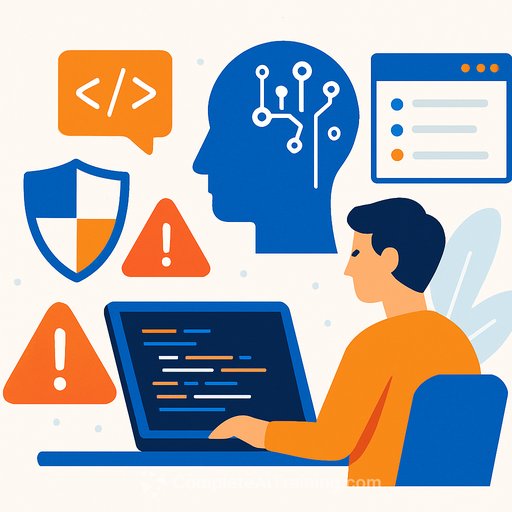AI Vibe Coding: What It Is, Why It’s Risky, and How to Stay Safe
What is AI Vibe Coding?
AI vibe coding is a new method of software development that creates executable code from natural language prompts. It allows users, even without programming skills, to build software by simply describing what they want in plain English. For example, you could say, “create a crypto website with a blog section and user login,” and AI tools will generate the corresponding code.
This approach leverages machine learning models trained on vast amounts of code to interpret user instructions and produce functional software. Unlike traditional development, which requires coding expertise and rigorous reviews, AI vibe coding lowers the barrier to entry, enabling more people to contribute to technology projects.
A notable example is the Bitcoin faucet site 21million.com, inspired by an early Bitcoin initiative. The site is being built using AI vibe coding and aims to introduce new users to Bitcoin, even though it isn’t fully operational yet. This demonstrates how AI vibe coding can accelerate project creation, but it also highlights the need for caution.
Key Features of AI Vibe Coding
- Natural Language Processing (NLP): AI vibe coding depends on NLP techniques to understand and process user commands.
- Machine Learning: Models trained on extensive coding datasets generate executable code from natural language prompts.
- Real-Time Feedback: Users get immediate responses and can iterate the code quickly based on the output.
- Accessibility: It democratizes software creation by enabling people without formal coding training to develop functional applications.
Why Is AI Vibe Coding Considered Risky?
While AI vibe coding offers speed and accessibility, it carries several risks that IT professionals should consider carefully.
- Security Concerns: AI-generated code may overlook security best practices, making applications vulnerable to attacks and data breaches.
- Code Quality: The generated code might have bugs, inefficiencies, or poor maintainability since AI doesn't always follow established coding standards.
- Ethical Issues: Ownership and copyright of AI-produced code remain unclear, raising legal and ethical questions.
- Over-reliance on AI: Dependence on AI tools might erode developers’ traditional coding skills and problem-solving abilities.
- Explainability: Users may struggle to debug or refactor AI-generated code due to limited understanding of how the code was produced.
How to Vibe Code Safely
To reduce risks, follow these practical steps when working with AI-generated code:
- Learn Basic Coding Principles: Understanding fundamental coding concepts helps you review and adjust AI-generated code effectively.
- Implement Security Practices: Always apply security checks and validations to protect your applications against vulnerabilities.
- Regular Reviews and Updates: Conduct code audits and patch issues promptly. Collaborate with experienced developers for feedback.
- Know Legal and Ethical Boundaries: Be aware of intellectual property rights and consult legal experts if necessary to avoid complications.
How Blockchain Can Support AI Vibe Coding
Blockchain technology can complement AI vibe coding by enhancing security, transparency, and collaboration:
- Code Integrity: Blockchain’s decentralized ledger can verify that AI-generated code hasn’t been tampered with.
- Transparency: Immutable logs record all changes and interactions, improving accountability in collaborative coding projects.
- Collaboration: Blockchain platforms enable secure, trustless exchanges of code and feedback among developers, adding an extra layer of security beyond centralized services like GitHub.
For IT professionals interested in expanding their AI skills related to coding and automation, exploring targeted courses can be beneficial. Resources like Complete AI Training’s skill-based courses offer practical learning paths.
Your membership also unlocks:






